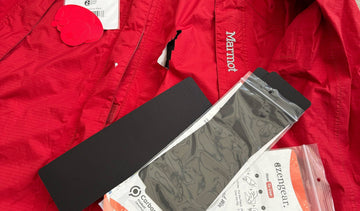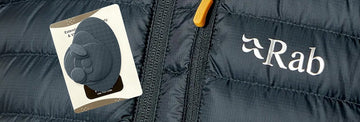Whistles are a simple but ingenious device that is used to produce sound. They are typically made from either metal or plastic tubing, with one end sealed and the other open. When air is blown across the whistle's opening, it vibrates at a specific frequency, creating a high-pitched whistle sound. But how do whistles actually work?
How Are Whistles Made
Whistles fashioned of bone or wood have been in use for thousands of years for spiritual, practical, and entertainment purposes. The boatswain's pipe, for example, is one of the most distinctive whistles because it is used aboard naval ships to transmit orders and pay respect to dignitaries. It has developed from ancient Greek and Roman pipes.

During the Crusades, a medieval version was utilized to assemble English crossbow men on deck for an assault. The current model, which is made by the Acme Whistle Company of Birmingham, England, was originally produced in 1868 by Joseph Hudson, the company's founder.
The first whistle was blown by a referee during a sporting event in 1878, ushering in the modern era of whistling. During a match at the Nottingham Forest Soccer Club, Hudson, a toolmaker who was interested in whistles, created a brass instrument that was used instead of the usual referee's hand signal of waving a handkerchief.

In 1883, the London Metropolitan Police Department announced a competition to find an alternative noisemaker for the officers' hand rattle, which was heavy and inconvenient. Hudson developed a lightweight, compact whistle that produced two discordant tones that could be heard for more than a mile away. It was quickly adopted and is still made use of today.
In 1884, Hudson created the "pea whistle." A tiny ball moving within the whistle's air chamber creates the distinctive trilling sound now associated with American police and referee whistles. The pea whistle is still the world's most popular form of whistle.

Whistle Manufacturing Process
The key to whistle-making lies in the science of sound waves. When you blow sharply across the whistle's opening, it acts as a resonator, amplifying the energy of your breath and vibrating more intensely at a certain frequency that corresponds with its shape. Some types of whistles even incorporate holes along their length, which further affect the whistle's pitch by changing its geometry and introducing additional vibration points.
Although whistle design has evolved over time to include more complex shapes and materials, this basic principle remains unchanged. Whether you're blowing through an old soda bottle or a shiny brass whistle, the fundamental process of whistle production always involves a resonator that amplifies vibrations and creates sound waves. And thanks to this clever design, whistles continue to be an effective tool for all kinds of applications – from sporting events and outdoor activities, to law enforcement and emergency rescue operations.
Different Types of Whistles
There are many different types of whistles, each with its own unique advantages and disadvantages. For example, police officers often use whistle to signal for help or to scare away criminals. Whistles can also be used as a warning device, letting people know that there is danger nearby. In addition, whistles are frequently used in sports, both to start and stop play. Some whistles even have multiple functions, such as the ability to emit a high-pitched tone that can be used to call for help in an emergency situation. Whatever the purpose, there is sure to be a whistle that meets your needs.
Police Whistles
The sound of these whistles must be recognisable in all areas and may travel thousands of yards. Different forces throughout Britain utilised various types of whistles.
In 1870 Joseph Hudson setup a whistle factory in Birmingham, England and in 1883 he was awarded a contract by the Metropolitan Police to produce over 7,000 whistles for police forces to replace the hand rattle whistles.


Constables and sergeants in the early days used grey/silver metal pea whistles with a huge ring on top and a cork inside. Because of their loud and authoritative shriek, which could be heard for miles, the police whistle became synonymous with an alarm's sound. These whistles were soon integrated into police uniforms. They could be carried in a jacket or draped down the front of the uniform.
Dog Whistles
A dog whistle is a type of whistle used to teach cats and dogs. These whistles create ultrasonic sound waves that can only be heard by animals. Animals have a good hearing acuity, so they can easily hear the noise produced by these whistles, which are inaudible to humans.
Typically, dog-whistle tones fall within the range of 16000 to 22000 Hertz.
During the early 1800s, Francis Galton developed dog whistles after researchers recognised that species have varying hearing ranges. Several tests were conducted, and it was eventually discovered that dogs can hear sounds above and below the human hearing range.

Galton carried out a number of tests on different hearing frequencies and capabilities shortly after. He started by conducting research on humans by creating a tiny brass tube with a slider that could be used to alter the frequency range. This prompted him to attempt it on animals as well, which he did in subsequent years.
Dog whistles are commonly used by dog owners, trainers, and veterinarians to give orders to their dogs. These gadgets are ideal for teaching puppies and dogs who cannot comprehend hand signals or spoken commands. Dogs may be trained to perform a variety of stunts and skills using dog training whistles.
For example, if you want your dog to run, walk, sit, or lie down for whatever reason, you can assign distinct tones to each of these activities. Your goal will be to teach your dog that a specific action corresponds to a particular sound and that it must perform it.
Safety Whistles
A safety whistle is a small, handheld device that is used to signal for help in an emergency situation. Typically, these whistles emit a high-pitched sound that can be easily heard from long distances. Many safety whistles also come equipped with a small whistle chain, or lanyard, which allows the whistle to be safely and securely attached to your clothing or other gear. The purpose of this whistle is to increase your chances of getting help should you find yourself in a dangerous or potentially life-threatening situation such as being lost in the wilderness, navigating a treacherous mountain path, or escaping from an assailant. With its piercing sound and durable design, the safety whistle is a vital tool for anyone who wants to stay safe and prepared at all times.
Product Spotlight:
aZengear Survival Whistle with Flint Fire Starter
- PORTABLE AND LIGHTWEIGHT SURVIVAL KIT - fits in your pocket or can be attached to your keychain or lanyard string. Measures 80x21x5mm and weights 12g. Makes a great gift.
- FERRO ROD WITH A STRIKER - magnesium ferro rod easily generates sparks to start a fire outdoors in the rain or wind
aZengear Stainless Steel Whistle With Paracord Lanyard String (2 Pack)
- Double Tubes for Double the Volume: Say goodbye to wimpy whistles that no one can hear. Our whistle is equipped with double tubes, ensuring it produces a super loud sound that will make heads turn and ears perk up. With minimal effort, you can blow this whistle and unleash a high-frequency, crisp sound that can be heard at incredible distances. So go ahead and be the noise-making champion!
- Keychain & Paracord Lanyard Included: We know you'll want to show off your whistle skills wherever you go, so we've included a premium paracord lanyard and a handy keychain ring. Hang it around your neck like a whistle-wielding rockstar, keep it snug in your pocket for easy access, or attach it to your backpack to let the world know you mean business. It's the perfect accessory for all your whistle-related adventures.
Referee Whistles
The whistle that is commonly known as the "football referee's whistle" has a significant role in sports. Sports such as soccer, basketball, and American football would not have been able to create match highlights or events of interest without a referee whistle.

A whistle is a sign of vital information that influences the game's outcome. A referee blows a whistle to stop a soccer match if there is a free kick or the ball goes out of play, for example. That isn't the only time when a referee uses this whistle, though. Referee whistles are used for several important messages, such as
It is generally thought that William Atack, a referee from New Zealand, was the first to use a whistle to halt a rugby game in 1884. Referees prior to this used their voices and handkerchiefs rather than whistles to communicate their instructions.
The referee whistles were originally unveiled to the public in 1987 and are currently used across the world. These whistles produce an extremely loud tone that can be heard by everyone on the field. Professional referees, high schools and colleges, and international sports officials frequently choose these classic whistles.
Hopefully this blog post gave you a quick introduction to different types of whistles. Whether you're looking for a whistle to use in your next hunting expedition or just want to add a decorative touch to your home decor, there is sure to be a whistle type out there that will meet your needs. So why wait? Navigate through the wide variety of whistles available today and find one that's perfect for you!







